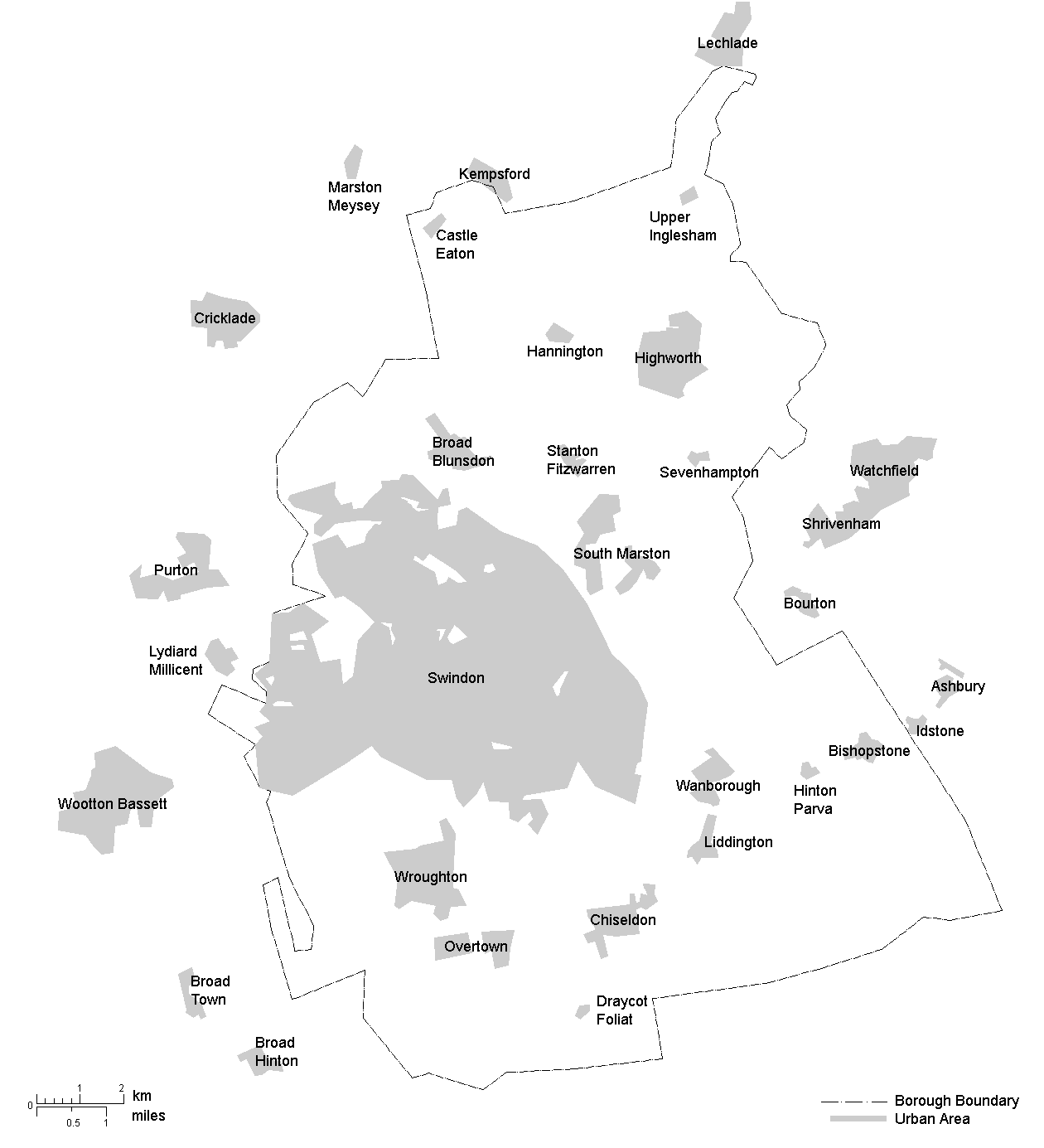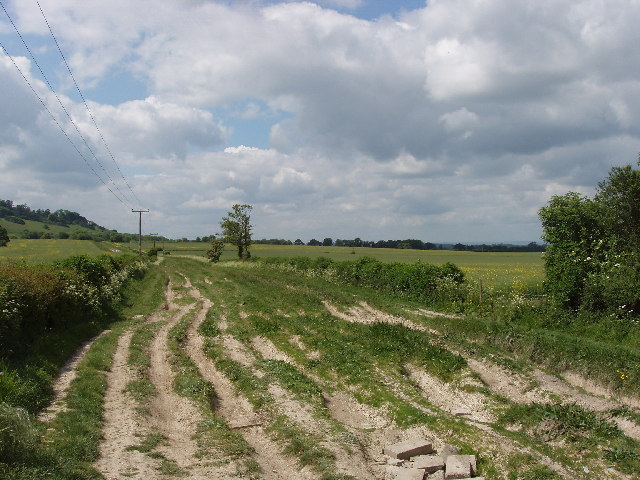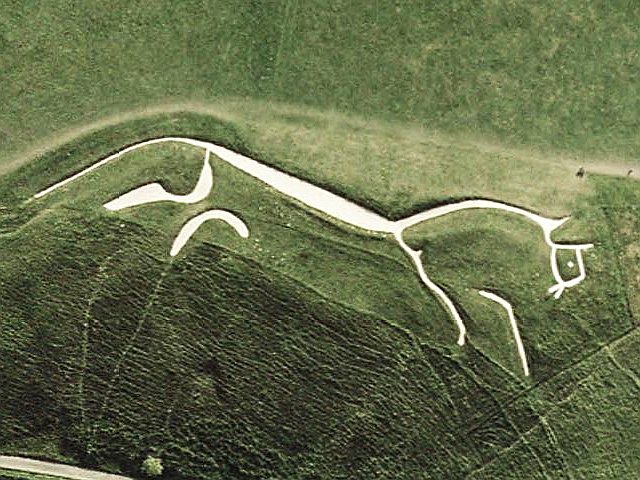|
Bishopstone, Swindon
Bishopstone is a village and civil parish in the Swindon unitary authority of Wiltshire, England, about east of Swindon, and on the county border with Oxfordshire. Since 1934 the parish has included the village of Hinton Parva. Bishopstone lies on the north slope of the Lambourn Downs, overlooking the Vale of White Horse. It is between Wanborough and Ashbury on the historic Icknield Way. The village has a public house, the ''Royal Oak'', and a number of thatched cottages, centred on a mill-pond. The village is often used as a base for walkers on the Ridgeway National Trail. The Ridgeway above Bishopstone is a byway open to motor vehicles between April and October. On the downs above Bishopstone are medieval field systems known as lynchet A lynchet or linchet is an earth terrace found on the side of a hill. Lynchets are a feature of ancient field systems of the British Isles. They are commonly found in vertical rows and more commonly referred to as "strip lynchets" ... [...More Info...] [...Related Items...] OR: [Wikipedia] [Google] [Baidu] |
Borough Of Swindon
The Borough of Swindon is a local government authority in South West England, centred on the urban area and town of Swindon and forming part of the ceremonial counties of England, ceremonial county of Wiltshire. History In 1974 the Thamesdown district of Wiltshire was created from the areas of the municipal borough of Swindon (created 1900) and Highworth Rural District (created 1894). On 1 April 1997 it was made administratively independent of Wiltshire County Council, and its council became a unitary authority. The council adopted the name Swindon on 24 April 1997. The former Thamesdown name and logo continued to be used by the municipal bus operator, Swindon's Bus Company, Thamesdown Transport, until 2017 when it was sold and renamed to "Swindon's Bus Company". Geography The borough of Swindon occupies an area forming the north east corner of Wiltshire and is bordered by two other counties, Gloucestershire (to the north) and Oxfordshire (to the east). West Berkshire is also ... [...More Info...] [...Related Items...] OR: [Wikipedia] [Google] [Baidu] |
Vale Of White Horse
The Vale of White Horse is a local government district of Oxfordshire in England. It was historically a north-west projection of Berkshire. The area is commonly referred to as the 'Vale of ''the'' White Horse'. It is crossed by the Ridgeway National Trail in its far south, across the North Wessex Downs AONB at the junction of four counties. The northern boundary is defined by the River Thames. The name refers to Uffington White Horse, a prehistoric hill figure. History The area has been long settled as a productive fertile chalklands above well-drained clay valleys and well-farmed with many small woodlands and hills between the Berkshire Downs and the River Thames on its north and east sides. It is named after the prominent and large Bronze Age-founded Uffington White Horse hill figure. The name "Vale of the White Horse" predates the present-day local authority district, having been described, for example, in the 1870-72 ''Imperial Gazetteer of England and Wales''. The d ... [...More Info...] [...Related Items...] OR: [Wikipedia] [Google] [Baidu] |
Civil Parishes In Wiltshire
{{disambiguation ...
Civil may refer to: *Civic virtue, or civility *Civil action, or lawsuit * Civil affairs *Civil and political rights *Civil disobedience *Civil engineering *Civil (journalism), a platform for independent journalism *Civilian, someone not a member of armed forces *Civil law (other), multiple meanings * Civil liberties *Civil religion *Civil service *Civil society *Civil war *Civil (surname) Civil is a surname. Notable people with the surname include: *Alan Civil (1929–1989), British horn player *François Civil (born 1989), French actor * Gabrielle Civil, American performance artist * Karen Civil (born 1984), American social media a ... [...More Info...] [...Related Items...] OR: [Wikipedia] [Google] [Baidu] |
Lynchet
A lynchet or linchet is an earth terrace found on the side of a hill. Lynchets are a feature of ancient field systems of the British Isles. They are commonly found in vertical rows and more commonly referred to as "strip lynchets". Lynchets appear predominantly in Southern Britain and many are in areas close to Iron Age forts and other earthworks, including later Roman earthworks and earlier barrows from the Neolithic and Bronze Age periods. The size, location, spacing and number of rows of many strip lynchets indicates that many were man-made. It is most likely that lynchets were dug to maximise the use of land for agriculture, although they may have had other, ceremonial uses. The word is the diminutive form of ''lynch'', now rarely appearing in the English language, indicating an agricultural terrace; it is cognate with the golf ''links''. However, both "lynchet" and "lynch" may also be used to refer to a strip of green land left between two pieces of ploughed land on n ... [...More Info...] [...Related Items...] OR: [Wikipedia] [Google] [Baidu] |
Ridgeway National Trail
The ancient tree-lined path winds over the downs countryside The Ridgeway is a ridgeway or ancient trackway described as Britain's oldest road. The section clearly identified as an ancient trackway extends from Wiltshire along the chalk ridge of the Berkshire Downs to the River Thames at the Goring Gap, part of the Icknield Way which ran, not always on the ridge, from Salisbury Plain to East Anglia. The route was adapted and extended as a National Trail, created in 1972. The Ridgeway National Trail follows the ancient Ridgeway from Overton Hill, near Avebury, to Streatley, then follows footpaths and parts of the ancient Icknield Way through the Chiltern Hills to Ivinghoe Beacon in Buckinghamshire. The National Trail is long. History For at least 5,000 years travellers have used the Ridgeway. The Ridgeway provided a reliable trading route to the Dorset coast and to the Wash in Norfolk. The high dry ground made travel easy and provided a measure of protection by givi ... [...More Info...] [...Related Items...] OR: [Wikipedia] [Google] [Baidu] |
Icknield Way
The Icknield Way is an ancient trackway in southern and eastern England that runs from Norfolk to Wiltshire. It follows the chalk escarpment that includes the Berkshire Downs and Chiltern Hills. Background It is generally said to be, within Great Britain, one of the oldest roads the route of which can still be traced, being one of the few long-distance trackways to have existed before the Romans occupied the country. However, this has been disputed, and the evidence for its being a prehistoric route has been questioned. The name is Celto-British in derivation, and may be named after the Iceni tribe. They may have established this route to permit trade with other parts of the country from their base in East Anglia. It has also been suggested that the road has older prehistoric origins. The name is also said to have been initially used for the part to the west and south (i.e. south of the River Thames) but now refers usually to the track or traces north of the Thames. Fro ... [...More Info...] [...Related Items...] OR: [Wikipedia] [Google] [Baidu] |
Ashbury, Oxfordshire
Ashbury is a village and large civil parish at the upper end (west) of the Vale of White Horse. It was part of Berkshire until the 1974 boundary changes transferred it to Oxfordshire. The village is centred east of Swindon in neighbouring Wiltshire. The parish includes the hamlets of Idstone and Kingstone Winslow. The 2011 Census recorded the parish's population as 506. Geography The parish rises from an alluvial plain in the north to an escarpment in the south. Soils are shallow on the chalkland of the North Wessex Downs Area of Outstanding Natural Beauty in the southern part of the parish. Five small tributaries of the north-flowing Cole rise in the central strip of the parish and flow northwards. Archaeology The Neolithic burial site of Wayland's Smithy is in the parish east of the village. History The earliest known record of Ashbury is from 840, when King Æthelwulf of Wessex granted land at ''Aisshedoune'' to his minister Duda. In subsequent charters the toponym ... [...More Info...] [...Related Items...] OR: [Wikipedia] [Google] [Baidu] |
Wanborough, Wiltshire
Wanborough is a large village and civil parish in the borough of Swindon, Wiltshire, England. The village is about southeast of Swindon town centre. The settlement along the High Street is Lower Wanborough, while Upper Wanborough is on higher ground to the southwest. The parish includes the hamlets of Horpit (a short distance north of Wanborough) and Foxhill, to the southeast. History There was a Roman settlement, Durocornovium, slightly northwest of the current village, at a road junction mentioned in the Antonine Itinerary. Being the last ''vicus'' on Ermin Way or Ermin Street before the scarp slope of the Marlborough Downs, Durocornovium was a site where horses were watered before the steep climb off the Oxfordshire plain. Wanborough is just off the Ridgeway National Trail. Development in a strip along the road frontages characterised the village, which reached maximum development in the 4th century. Wanborough has been suggested as the site of the fortress of Guinnio ... [...More Info...] [...Related Items...] OR: [Wikipedia] [Google] [Baidu] |
Lambourn Downs
The Berkshire Downs are a range of chalk downland hills in South east England split between the counties of Berkshire and Oxfordshire. They are part of the North Wessex Downs Area of Outstanding Natural Beauty. The western parts of the downs are also known as the Lambourn Downs. Geography The Berkshire Downs run east–west, with their scarp slope facing north into the Vale of White Horse and their dip slope bounded by the course of the River Kennet. Geologically they are continuous with the Marlborough Downs to the west and the Chilterns to the east. In the east they are divided from the Chilterns by Goring Gap on the River Thames. In the west their boundary is generally taken to be the border between Berkshire and Wiltshire, although the downs in Wiltshire between the Berkshire border and the valley of the River Og are sometimes considered to be part of the Berkshire Downs. History English downland has attracted human habitation since prehistoric times. The ancient ... [...More Info...] [...Related Items...] OR: [Wikipedia] [Google] [Baidu] |
Wiltshire
Wiltshire (; abbreviated Wilts) is a historic and ceremonial county in South West England with an area of . It is landlocked and borders the counties of Dorset to the southwest, Somerset to the west, Hampshire to the southeast, Gloucestershire to the north, Oxfordshire to the northeast and Berkshire to the east. The county town was originally Wilton, after which the county is named, but Wiltshire Council is now based in the county town of Trowbridge. Within the county's boundary are two unitary authority areas, Wiltshire and Swindon, governed respectively by Wiltshire Council and Swindon Borough Council. Wiltshire is characterised by its high downland and wide valleys. Salisbury Plain is noted for being the location of the Stonehenge and Avebury stone circles (which together are a UNESCO Cultural and World Heritage site) and other ancient landmarks, and as a training area for the British Army. The city of Salisbury is notable for its medieval cathedral. Swindon is ... [...More Info...] [...Related Items...] OR: [Wikipedia] [Google] [Baidu] |
Hinton Parva, Wiltshire
Hinton Parva, also known as Little Hinton, is a village in the Borough of Swindon in Wiltshire, England. It lies about from the eastern edge of the Swindon built-up area, and is separated from the town by farmland and the village of Wanborough. Hinton Parva was a separate civil parish until 1934, and is now in the parish of Bishopstone. Parts of the village were taken over by the War Department during World War II in 1943 to store tanks. The Norman parish church of St Swithun is a Grade I listed building. An area around the church was designated a conservation area Protected areas or conservation areas are locations which receive protection because of their recognized natural, ecological or cultural values. There are several kinds of protected areas, which vary by level of protection depending on the ena ... in 1990. References Sources and further reading * {{authority control Villages in Wiltshire Borough of Swindon Former civil parishes in Wiltshire For ... [...More Info...] [...Related Items...] OR: [Wikipedia] [Google] [Baidu] |
Oxfordshire
Oxfordshire is a ceremonial and non-metropolitan county in the north west of South East England. It is a mainly rural county, with its largest settlement being the city of Oxford. The county is a centre of research and development, primarily due to the work of the University of Oxford and several notable science parks. These include the Harwell Science and Innovation Campus and Milton Park, both situated around the towns of Didcot and Abingdon-on-Thames. It is a landlocked county, bordered by six counties: Berkshire to the south, Buckinghamshire to the east, Wiltshire to the south west, Gloucestershire to the west, Warwickshire to the north west, and Northamptonshire to the north east. Oxfordshire is locally governed by Oxfordshire County Council, together with local councils of its five non-metropolitan districts: City of Oxford, Cherwell, South Oxfordshire, Vale of White Horse, and West Oxfordshire. Present-day Oxfordshire spanning the area south of the ... [...More Info...] [...Related Items...] OR: [Wikipedia] [Google] [Baidu] |





